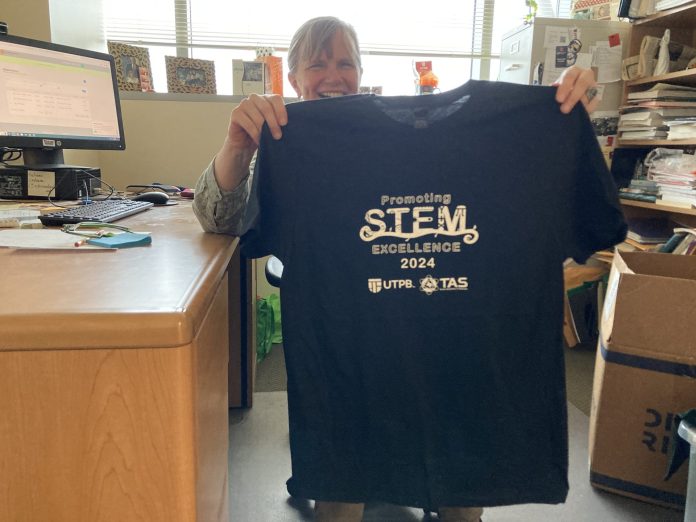
The University of Texas Permian Basin is hosting its first Texas Academy of Science meeting this week.
The 127th annual event is March 1 and 2 and has associated field trips to McCamey on Thursday and the I-20 Wildlife Preserve on Sunday.
UTPB biology lecturer Irene Perry is the local host co-chair and Milka Montes, associate professor and department chair of the chemistry program, is the local host chair. Montes also is the collegiate academy counselor for TAS.
“I think it is a really good opportunity … first of all to showcase our campus to people from other areas in Texas. Not a lot of people are aware of UTPB necessarily because when they think or hear West Texas they think oil,” Montes said. “They don’t see us as a college or university city or place, so it’s a good way to showcase the university (and) the city to people from all over Texas.”
“But it’s also a good way to bring new people into our community, so it is kind of like recruiting for Odessa. We’re kind of recruiting the scientific community, which we need. … It is recognized that we need people with STEM skills, especially because of the oil field and all these other areas,” Montes said.
On campus, the main locations will be the Mesa Building and library. Awards will be presented in the Cooper Lecture Hall in the Science and Technology Building.
The trip to McCamey is led by Dr. Mohamed Zobaa, a UTPB assistant professor in geosciences, and David Hembry, assistant professor in the biology program, is leading the one to the I-20 Preserve.
More than 400 people from all over Texas are expected to attend, including students from the STEM Academy.
The TAS motto is Promoting STEM Excellence, which is on a T-shirt designed by student Talon Cress and there will be decorations in the style of papel picado created in UTPB’s new makerspace.
For the final big banquet at the MCM FunDome, they will have a Mexican buffet and the UTPB Ballet Folklorico group will perform.
Perry said she participated in a TAS meeting for the first time when she was on the research staff at Sam Houston State University in the 1990s.
“I liked it because it’s a smaller conference and it’s interdisciplinary so it’s a very friendly atmosphere for students to present, for students to network with each other and then with professors (and) researchers,” Perry said.
“For a school like ours, without PhD programs in the sciences, without big research programs, it’s a wonderful opportunity for undergraduates to present research to see research not just in one specific field, but across many fields,” she added.
Perry said Hembry has been doing undergraduate research with students for over a year looking at pollinator-plant interactions. The students go out weekly to make those observations.
Hembry’s students presented their work initially last year at the Texas Academy of Science meeting in San Angelo.
Analiza Rayos and Jaqueline Barrera experienced the San Angelo gathering last year and greatly enjoyed it. They presented on digitizing the herbarium at UTPB.
Additionally, they are starting a university chapter of TAS that anyone of any major can join. They have found that a lot of students are interested.
This year, they are working on whether ephedra plants can be antibacterial.
Rayos said there are two different kinds of ephedra and one seemed to be more antibacterial.
She added that events like this are very important for students.
“Those professors could be someone that have connections to help you (in the) future time, but also with the kids you’re seeing from other schools how they’re experiencing things, how different it is from you, how it’s similar. It’s very important, I believe,” Rayos said.
When they presented on the herbarium last year, Barrera said the judges offered them a chance to visit their institutions to see their herbarium.
“I thought that was very interesting and cool. They told us about their research and that they would like to see us there,” Barrera said.
The students offered perspective on their schools, which was helpful for her because she wants to go to graduate school.
“I’m just thinking about that next step. Where do I want to go and if I have that opportunity to talk to someone else and them telling me this is what we have, it’s a little bit more organic as far as their opinion about their institution,” Barrera said.



